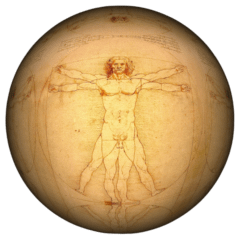In the heart of ancient Egypt’s rich history lies a remarkable pair of statues, the Rahotep and Nofret statues. Carved during the Fourth Dynasty, around 2600 BC, these limestone sculptures are a testament to the enduring allure of Egyptian art and culture.
Rahotep, son of Sneferu and half-brother of Khufu, believed to be a high-ranking official, and his wife Nofret, were honored in death with these stunning depictions. What sets these statues apart is their lifelike representation and vibrant coloring. Rahotep and Nofret’s statues were painted in rich, earthy tones, revealing the Egyptians’ sophisticated understanding of color aesthetics. These statues are invaluable not only for their artistic brilliance but also for the insights they offer into ancient Egyptian life, fashion, and ideals of beauty. Nofret’s elegant wig and intricate jewelry, combined with Rahotep’s regal attire, highlight the importance of appearance and status in Egyptian society. Today, the Rahotep and Nofret statues continue to captivate the world, drawing us into the mystique of an ancient civilization that revered art and beauty as enduring legacies of their time.
Do you like this topic? Find out more!

